Delt:
Take it offline!
This Education in Motion resource is also available as a printable PDF.
Download PDF
This month we have a new resource showing sitting pelvic positions in all anatomical planes and associated spinal postures. It includes typical clinical and equipment factors in each posture. Because we feel this will be an excellent resource for prescribers it is available on our website as a free printable PDF.
Download this article as printable PDF (recommended in A3 format)
Clinical Assessment Guidelines
-
Identify postural asymmetries at each body segment.
-
Is asymmetry flexible or fixed?
-
Measure angles in frontal, sagittal, and transverse plane.
-
For absolute angles, measure angles between a line connecting 2 points of reference on the body and a neutral/plumb line.
-
Angles which have moved clockwise from neutral axis are negative (-).
-
Angles which have moved counter-clockwise from neutral axis are positive (+).

Pelvis & Lower Extremities
Sagittal Pelvic Angle: Posterior Pelvic Tilt (+)

Potential Clinical Causes
-
Low tone or poor muscle control in pelvis or trunk
-
Abnormal (high, low, or fluctuating) tone in trunk or lower limbs
-
Abnormal reflexes in trunk or lower extremities
-
Limited hip flexion
-
Decreased lumbar lordosis
-
Decreased pelvic/lumbar spine range of motion
-
Decreased hamstring range of motion
Potential Technical Factors
-
Seat depth is too long
-
Footplate position relative to knee does not accommodate tight hamstrings
-
Front end angle / hanger angle doesn't accommodate hamstring range
-
Footplates are too high
-
Footplates are too low
-
Lack of posterior pelvis / sacral support
-
Back support angle is too acute
-
Seat-to-floor height too high for foot propulsion
-
Armrests are too low
Sagittal Pelvic Angle: Anterior Pelvic Tilt (-)
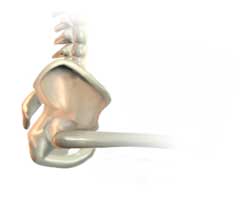
Potential Clinical Causes
Potential Equipment Factors
-
Knees are too low relative to hips
-
Lumbar contouring is too aggressive
-
Inadequate trunk not support
-
Back support too upright, forcing trunk into flexion
-
Back support is too reclined, providing inadequate support
Frontal Pelvic Angle: Obliquity
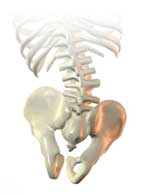
Potential Clinical Causes
-
Scoliosis
-
Abnormal reflexes in trunk or lower limbs
-
Asymmetrical muscle tone (trunk or lower limbs)
-
Asymmetrical trunk muscle strength
-
Asymmetrical soft tissue or muscle mass
-
Asymmetrical pelvic / femur bone structure
-
Asymmetrical hip flexion range of motion
-
Limited hip abduction and / or adduction
-
Limited hip internal or external rotation
-
Unilateral hip or pelvic pain
Potential Equipment Factors
-
Poor base of support in seat, e.g. stretched seat canvas
-
Footplates, seat-to-back angle or front frame angle may not match client's available range of motion
-
Seat shape does not support trochanters
-
Wheelchair too wide
-
Wheelchair too narrow, particularly for clients who are hoisted into seating
-
Seat or back does not provide enough lateral pelvic support
-
Joystick or wheel location inappropriate
-
Armrests too low
Transverse Pelvic Angle: Rotation
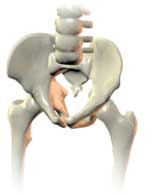
Potential Clinical Causes
-
Scoliosis
-
Asymmetrical hip flexion
-
Asymmetrical muscle tone in trunk
-
Femoral or lower leg length discrepancy
-
Posterior hip subluxation
-
Limited hip abduction or adduction range of motion
-
Asymmetrical muscle mass in the posterior pelvic area
-
Unilateral foot propulsion
Potential Equipment Factors
-
Trunk not fully supported
-
Lack of posterior pelvis / sacral support
-
Seat or backrest contours too narrow
-
Seat-to-floor height too high for foot propulsion
-
Wheel set up incorrect for hand propulsion
Pelvis & Spine
Sagittal Sternal Angle: Thoracic Kyphosis
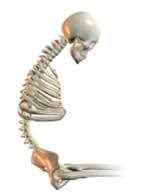
Potential Clinical Causes
-
Low muscle tone in the trunk muscles
-
Compensation for posterior pelvic lift
-
Diminished head control
-
Postural deterioration over time
-
Extreme hypermobility
-
Hyper extended cervical spine
-
Diminished disc space in upper thoracic spine
Potential Equipment Factors
-
Seat-to-back angle too closed
-
Back support too low
-
Arm support too low
-
Back does not match shape of posterior trunk
-
Head support mounted too far forward or too low
-
Wheel set up incorrect for hand propulsion
Sagittal Trunk Angle: Global Spinal Kyphosis
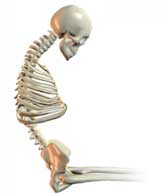
Potential Clinical Causes
-
Low tone or poor muscle control in pelvis or trunk
-
Compensation for posterior pelvic tilt
-
Structural spinal deformity
-
Diminished head control
-
Compensation for visual impairment
Potential Equipment Factors
-
Back does not match shape of posterior trunk
-
Seat-to-back angle too open or closed
-
Lack of adequate posterior pelvis / sacral support / back does not support posterior pelvis
-
Back support too vertical
-
Back support too low
-
Head support mounted too far forward or too low
-
Arm supports too low
Sagittal Abdominal Angle: Lordosis

Potential Clinical Causes
-
Low or absent muscle tone in the trunk muscles
-
Tightened paraspinals
-
Hypermobility of lumbar spine
-
Compensation for anterior tilted pelvis
-
Compensation for lumbar instability
-
Obesity
-
Fixed structural deformity
Potential Equipment Factors
-
Anterior femoral angle (knees lower than hips)
-
Back too vertical
-
Excessive lumbar contour
-
Back does not match shape of posterior trunk
-
Posterior pelvic support too high
-
Back support too low
-
Orientation in space not optimal (system too upright)
Scoliosis
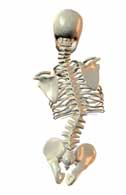
Potential Clinical Causes
-
Compensation for pelvic obliquity and / or pelvic rotation
-
Asymmetrical muscle tone or strength in the trunk muscles
-
Decreased trunk balance
-
Structural spinal deformity
-
Asymmetrical upper extremity strength during manual wheelchair propulsion
-
Inability to hold the head in midline
Potential Equipment Factors
-
Back does not match shape of posterior trunk
-
Back does not support posterior pelvis
-
Back does not provide enough lateral support
-
Wheelchair does not provide solid base (sling upholstery)
-
Seat cushion does not provide pelvic stability
-
Upper extremity support is too low, too high, or too wide
-
Joystick or wheel location inappropriate